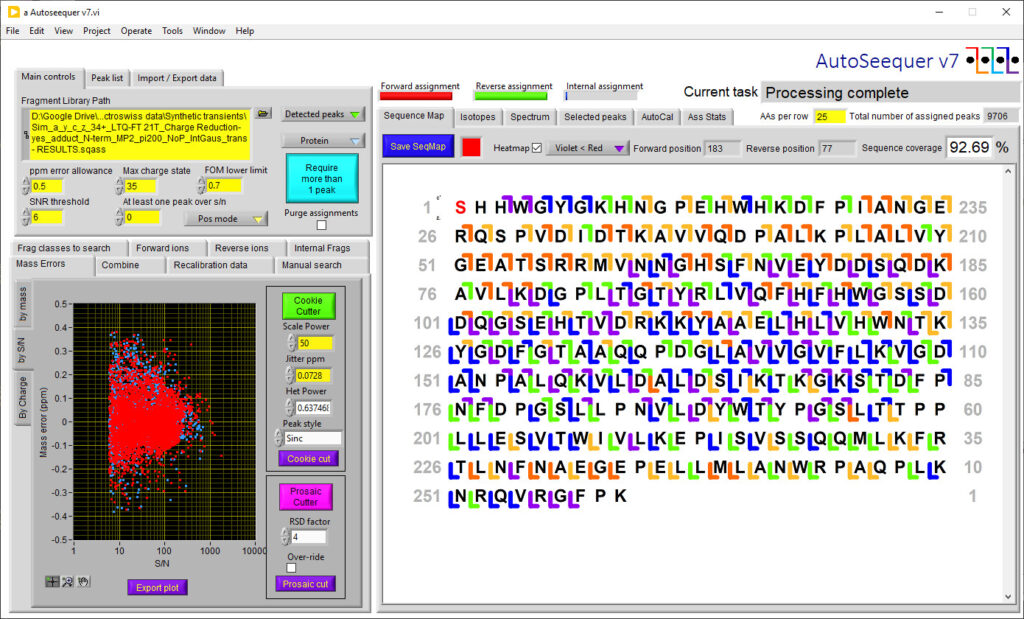Top-down with AutoVectis

Top down protein analysis is growing in popularity thanks to improvements in instrumentation and the ability of the top-down method to provide improved information, for example, on the position and nature of post-translational modifications.
The combination of the improved signal-to-noise ratio and improved mass accuracy associated with the use of absorption mode FT-MS data processing is a valuable asset for top-down proteomics.
In order to realise this benefit we are developing top-down tools as part of the Autophaser Suite.
The first of these is AutoFraggeur – a tool that allows the user to create in-silico fragment libraries for any protein and with any post-translational modifications. These libraries are created in the TDMS file format making them easy to share and use with other applications (such as MatLab).
The second key tool is AutoSeequer. AutoSeequer compares the detected spectral peaks to the fragment library to assign protein fragments. In order to be assigned, all the appropriate isotopologue peaks that should be present, given the measured signal to noise of the largest peak in the cluster, must be present in the spectrum and within the given mass error.
This video provides a short introduction to AutoSeequer and some of its capabilities.
We are developing a growing range of training materials to help users get the best performance out of AutoSeequer. For example:
New functionality is being added to Autoseequer. For example, we have recently added the capability for users to check potential assignments by superimposing an isotopic mode (theoretical isotopic distribution with realistic peak shape) over the relevent spectral region.

New capabilities:
- New functions to help you explore your top-down data-
- manually adding or subtracting PTMs or other modifications on the fly
- editing the protein sequence to investigate assignment issues
- look for any standard type of fragment, including those that were not defined in the initial library
- You can manually edit the isotope abundances to use for producing isotopic distributions – useful if you are using labelled or depleted substrates
- AutoSeequer now automatically matches the modeled isotopic distributions to the spectral resolution (but this can still be over-ridden)
- Sequence maps can be exported as vector files – making it easy to include them in publication quality graphics for posters or papers
